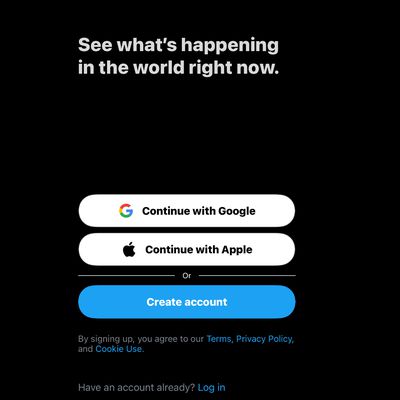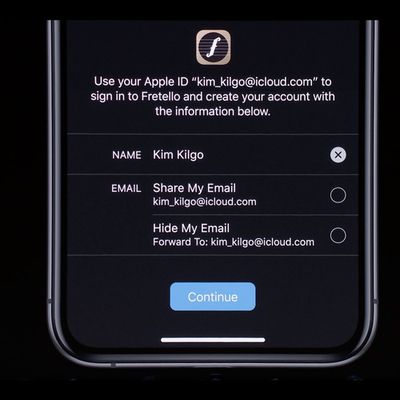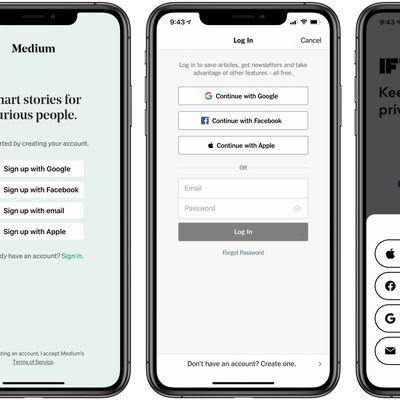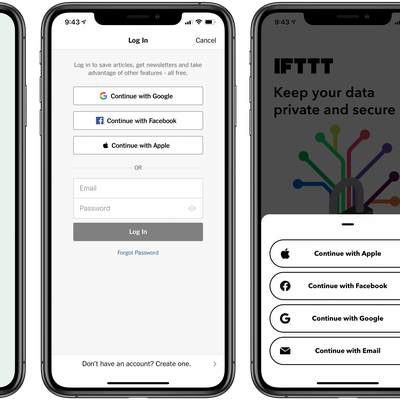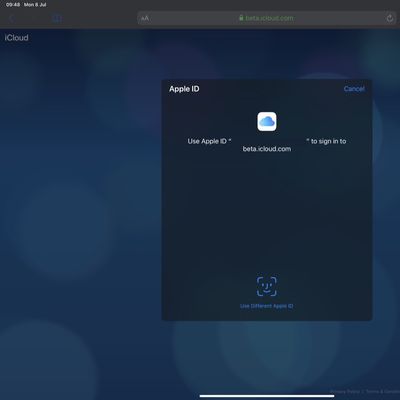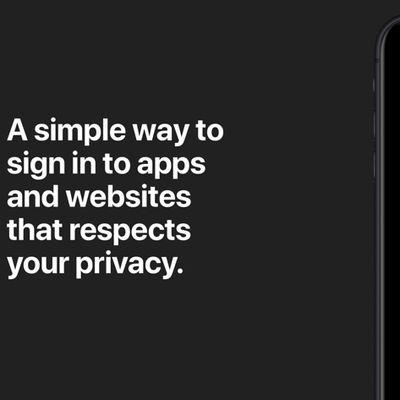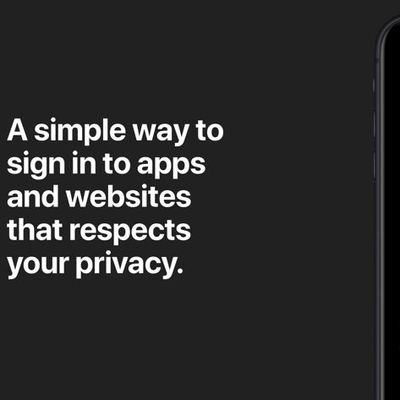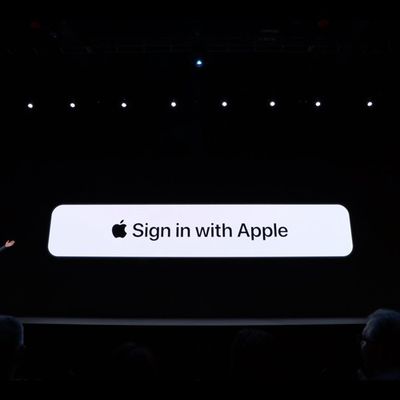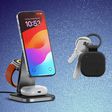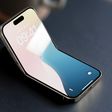Apple introduced a new Sign in with Apple feature in iOS 13, which is designed to let you create accounts for apps and websites using your Apple ID, so you don't have to give away your personal information.
Sign in with Apple is an alternative to the existing sign in with Google and Facebook options that apps and websites often offer. Apple's version protects your privacy and even lets you mask your email address.
How Sign in with Apple Works
In an app that supports Sign in with Apple, there's a "Continue with Apple" option that you'll see when asked to create an account.
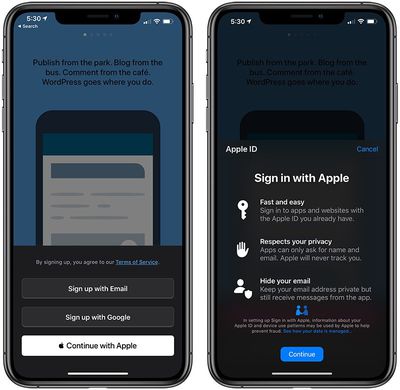
Tapping "Continue with Apple" explains that the feature is designed to let you sign into websites with the Apple ID that you already have. Developers don't see your Apple ID and are only provided with your name and your email address, though there is also an option to hide your email address if desired.
Apps and websites get no personally identifiable information from you. When you use the feature, apps receive a unique identifier that is distinct for each developer, so there's no cross-platform or cross-app tracking available.
With Sign in with Apple, developers and websites have no way of gathering information about you beyond the name that you provide and your email address, unless it's hidden.
Hiding Your Email Address
When using Sign in with Apple, you can provide developers and websites with your email address, or you can use a hidden email address assigned by Apple that will then forward incoming correspondence to your real email address.
If you choose to use your real email address, you can use any email associated with your Apple ID.
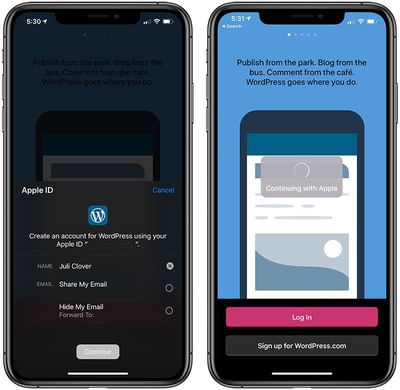
If you choose to hide your email address, Apple generates a unique email address that developers and websites can communicate with. Apple deletes messages after delivery or after a short while if undeliverable.
Sign in with Apple Developer Requirements
Apple is requiring all apps that offer sign in with Google, sign in with Facebook, or sign in with Twitter options to also offer Sign in with Apple, but there is an June 2020 deadline, so the feature may not be available in apps right away. Eventually all apps that allow you to sign in with other accounts from Google, Twitter, and Facebook will also be required to offer Sign in with Apple.
Apps are not required to use Sign in with Apple as an option if signing in with a username and password is available, though developers certainly can if they choose to.
Websites aren't required to use Sign in with Apple, but the option is available, and apps that also have websites do have Sign in with Apple implemented.
Where Sign in with Apple Works
Sign in with Apple works on the web and in iOS and Android apps. So if you have a login for an app that also has a website, you can use Sign in with Apple as a log in option in both places.
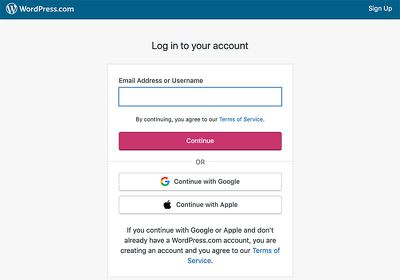
Using Sign in with Apple on the Web
When you use Sign in with Apple on the web, websites will request your Apple ID to log in, but the entire authentication process is handled by a separate window and done through Apple so the website never sees your Apple ID. Web access allows Sign in with Apple to be used on any device.
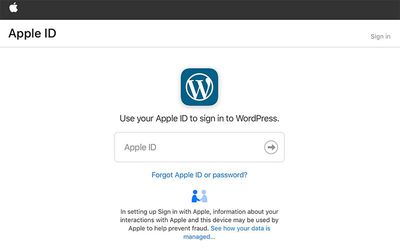
How to Change Your Forwarding Email
If you're signing into an app, Apple uses your default Apple ID email address, but if you're signing into a website, you can change your associated email address for forwarding purposes.
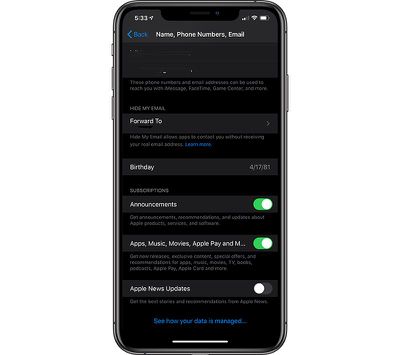
To do so, open up the Settings app, choose your Apple account (your picture) and then select Name, Phone Numbers, and Email.
Converting an Existing Login to Sign in with Apple
Some apps and websites will allow you to convert an existing login to Sign in with Apple, but the process for this will vary from service to service. Whether or not a specific app or website allows a login to be converted also depends on whether or not the feature has been implemented.
Signing in on a Public Computer
If you're using a public computer or a work computer to access a Sign in With Apple website, you can follow the same general steps for logging in on a website on your Mac. Click on the "Sign in With Apple" option on a supported website, and then enter your Apple ID, password, and then enter the two-factor authentication code on an approved device.
Biometric Authentication
Apple protects your Sign in with Apple logins with Touch ID, Face ID, and passcode options so no one can sign in to your accounts but you. Biometric options are used where available, such as on iPhones, iPads, and Macs, with passwords used on Macs that don't have biometric authentication options.
Two-Factor Authentication
On the web, all of your Sign in with Apple logins are protected by two-factor authentication, so you will need to confirm with a verified device just like you would when signing into iCloud on a new device. Two-factor authentication is required to use Sign in with Apple.
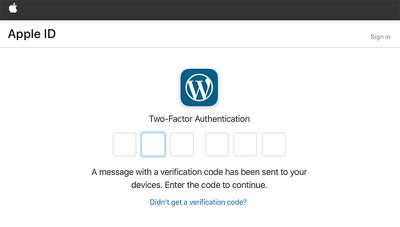
Managing Your Sign in with Apple Data
Apple maintains an on-device list of all of the apps and websites where you've used Sign in with Apple. Open up the Settings app, tap on your profile, choose Password & Security, and then tap on the "Apps Using Your Apple ID" option.
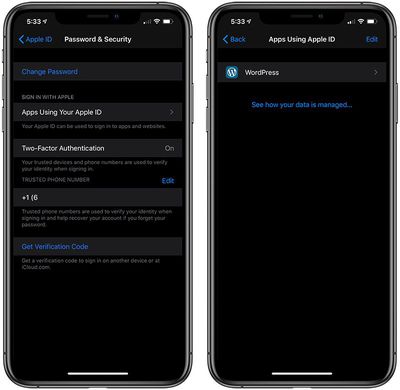
If you disable Sign in with Apple, the information that was shared with the developer to set up Sign in with Apple will continue to be available to the developer and handled according to the developer's privacy policy.
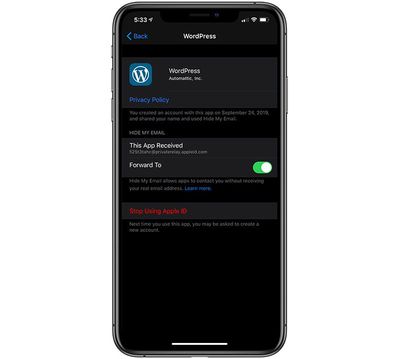
Privacy
Apple doesn't track what apps you're using or where you have accounts, but Apple says that information about your Apple ID and your device use patterns could be used to help Apple prevent fraud. Developers do not see any data from you that you don't provide.

The first time that you sign into an app or website, Apple shares a "simple numerical score" with the developer to prove that you're a real person. The score is calculated from recent Apple account activity and "abstracted information about your device and usage patterns."
Apple says that it knows if you've enabled Sign in with Apple for an app or a website, but it does not track the apps that you sign in to or when. Apple does not see or retain a history of which apps or websites you sign into or when you use Sign in with Apple, nor do developers receive this information.
Guide Feedback
Have questions about Sign in with Apple, know of a feature we left out, or want to offer feedback on this guide? Send us an email here.


